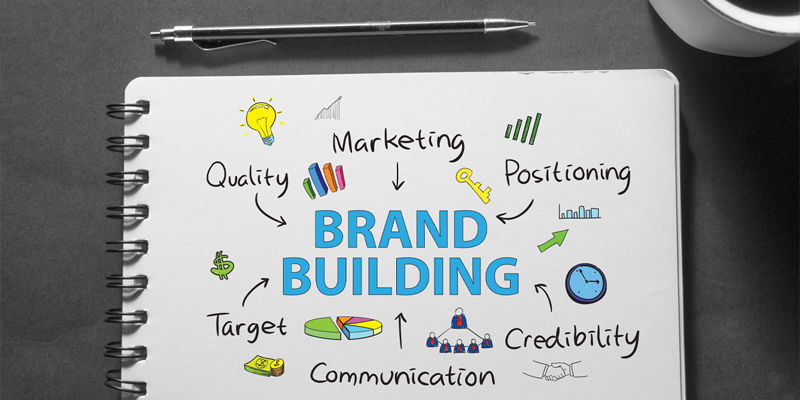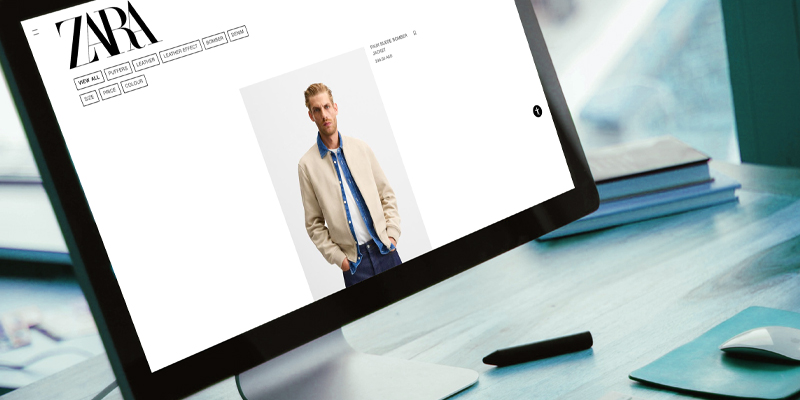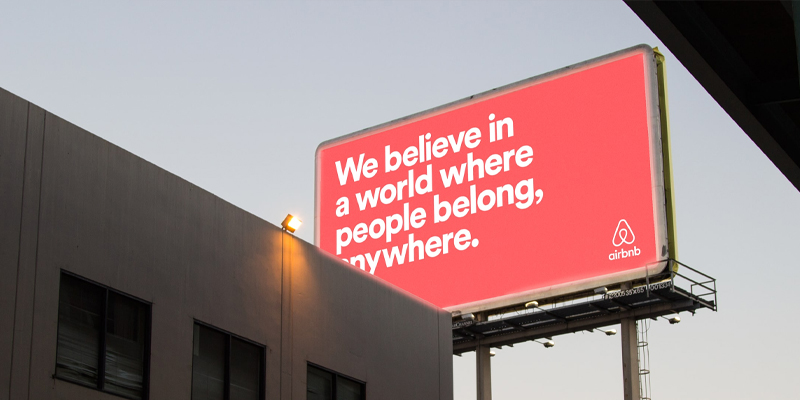How Can Visual Identity Increase Your Sales?
In today’s world, where companies and brands proliferate rapidly and compete to capture consumers’ attention, visual identity has become one of the most crucial factors distinguishing brands and helping them stay top of mind with customers. Visual identity goes beyond logos or colors; it includes all visual elements representing a company, such as designs, typography, and even marketing messages. Visual identity has a direct impact on customer experience and can, therefore, play a key role in boosting sales and driving revenue.
Reading Time: 10 Minutes
- 1. Definition of Visual Identity
- 2. The Relationship Between Visual Identity and Sales Growth
- 3. Visual Identity and Sales Growth in Digital Markets
- 4. Visual Identity as a Marketing Tool
- 5. How to Design a Visual Identity That Boosts Sales
- 6. Measuring the Impact of Visual Identity on Sales
- 7. Conclusion
1. Definition of Visual Identity

Visual identity encompasses everything a customer sees related to a brand. It includes logos, colors, fonts, icons, promotional designs, packaging, and even website design and marketing materials. Visual identity can be considered a form of visual expression that represents a brand and reflects its values and personality.
By using a consistent and professional visual identity, companies can build a strong image that makes customers remember and trust them, ultimately leading to increased sales.
2. The Relationship Between Visual Identity and Sales Growth

Visual identity impacts sales through various aspects, each contributing to improving the customer experience and increasing their willingness to engage with the brand. Let’s explore some of these aspects in detail:
2.1. Building Customer Trust
One of the most important factors in driving sales is building trust with customers. A consistent and professional visual identity plays a significant role in creating this trust. When customers see a brand with a consistent, professional visual identity across all communication channels—such as the website, social media, and advertising materials—they start perceiving the brand as trustworthy and serious.
For example, Apple is an excellent example of this. Its visual identity, which relies on simplicity and clean design, conveys innovation and luxury. As a result, customers trust Apple’s products and feel like they are purchasing something special.
2.2. Differentiation from Competitors
In a crowded market full of brands offering the same products or services, you need to stand out uniquely. Visual identity gives you a great opportunity to differentiate from competitors by offering creative designs and logos that reflect the company’s values and message.
Take, for example, Coca-Cola and Pepsi. While both brands offer similar soft drinks, Coca-Cola’s distinctive visual identity (with its signature red color and script font) makes it stand out clearly from Pepsi, which relies on blue tones and modern lines.
2.3. Influence on Purchase Decisions
Visual identity isn’t just a way to decorate products or express a brand; it has a strong psychological impact on purchase decisions. Colors, for instance, directly influence consumers’ emotions. Warm colors like red and orange can stimulate appetite and excitement, while cool colors like blue and green evoke trust and calmness.
Companies like McDonald’s use red and yellow predominantly in their visual identity, as these colors help attract attention and stimulate hunger, increasing the likelihood of customers purchasing their products.
2.4. Enhancing Brand Loyalty
A strong and consistent visual identity helps create long-term brand loyalty. When customers trust the brand and feel that it consistently represents them and meets their needs, they are more likely to return and make repeat purchases.
For example, Nike has built massive brand loyalty through its simple visual identity (the famous “Swoosh” logo), which is associated with strength and innovation. As a result, customers continue buying Nike products, even with many other options in the market.
2.5. Improving User Experience and Boosting Online Sales
In the digital business world, visual identity plays a crucial role in enhancing the user experience on websites and mobile apps. A clear and attractive user interface makes it easier for customers to navigate through products and services, increasing the likelihood of completing a purchase. Consistent design across digital channels helps customers feel comfortable and confident when interacting with a website or app.
For instance, Amazon relies on a simple and clear user interface, with a visual identity that reflects reliability and security. This simplicity makes the shopping experience easy and convenient, driving higher online sales.
3. Visual Identity and Sales Growth in Digital Markets

With the rapid shift toward online shopping, visual identity has become a key element in improving customer experience online and boosting digital sales. In this context, several factors contribute to increasing revenue through enhanced visual identity in the digital realm:
3.1. Social Media Marketing
A strong visual identity ensures that a brand stands out on social media platforms. Attractive images and logos grab followers’ attention and encourage them to engage with the brand. This interaction translates into increased brand awareness and sales.
For instance, Instagram has become a major platform for e-commerce thanks to the power of visual identity for active brands. Attractive designs and consistent posts create engagement and encourage purchases through integrated links in the posts.
3.2. Convenient Shopping and Exceptional User Experience
A consistent and visually appealing website or app design enhances user experience and leads to higher conversion rates. Visual identity here not only includes the logo and colors but also how products are presented and how users navigate the site. Ease of use and design appeal play a pivotal role in increasing the time users spend on a site, thereby increasing the likelihood of making a purchase.
An example of this is the Zara online store, which reflects a consistent and elegant visual identity. This helps enhance the user experience and drives customers to make purchasing decisions quickly and easily.
4. Visual Identity as a Marketing Tool

Visual identity can be used as a marketing tool to enhance brand recognition and increase sales in several ways:
4.1. Effective Packaging
Packaging is not just a way to protect the product but also an effective marketing tool that reflects the brand’s visual identity and helps grab customers’ attention on the shelves or when receiving products online. Innovative and attractive packaging leaves a positive impression on customers, increasing the chances of repeat purchases.
For example, Lush relies heavily on its eco-friendly visual identity in packaging design. Its product packaging focuses on sustainability and reflects the company’s commitment to the environment, attracting a large segment of customers who value these principles. This clear differentiation in visual identity helps enhance brand loyalty and drive sales.
4.2. Promotional Campaigns and Advertising Materials
Attractive ads that are consistent with a brand’s visual identity reinforce the marketing message and contribute to increased sales. Whether the ads are online, in newspapers, or on billboards, designs that effectively reflect the visual identity capture customers’ attention and encourage them to make a purchase decision.
For instance, Coca-Cola ads always carry its distinctive colors (red and white). This consistency in visual identity makes the ads instantly recognizable, which enhances customer loyalty and encourages them to buy the product.
5. How to Design a Visual Identity That Boosts Sales

Now that we understand how visual identity can increase sales, let’s explore how to design a strong visual identity that contributes to commercial growth:
5.1. Understanding the Target Audience
The first step in designing an effective visual identity is understanding the target audience. Visual identity should reflect the values and aspirations shared by the audience. For example, if targeting younger people, it might be helpful to use vibrant colors and innovative, unique designs. If the target is an older or professional audience, a more conservative and formal design may be needed.
For instance, Airbnb designed its visual identity to be warm and welcoming, reflecting its core mission of helping people feel at home anywhere in the world. Soft colors and comforting fonts make customers feel invited and comfortable, fitting well with its audience of travelers.
5.2. Consistency Across All Channels
Consistency in visual identity across all channels is crucial. Everything from the company logo to the website, social media accounts, and print materials should reflect the same values and use the same colors, fonts, and design elements. This creates a consistent customer experience and strengthens brand recognition.
Starbucks follows this strategy clearly. Whether you visit one of their stores, their website, or see one of their ads, you’ll notice the consistent use of green and white colors and the circular logo that distinctly reflects their brand. This consistency strengthens the brand and makes it familiar to customers, ultimately leading to increased sales.
5.3. Ongoing Innovation and Development of Visual Identity
Sometimes the market requires updating or refreshing the visual identity to keep up with changing trends and behaviors. Brands that know when and how to refresh their visual identity without losing their core personality achieve great success.
For example, Pepsi has made several changes to its logo over the years to maintain its relevance and connection with new generations, while keeping the core colors and overall design that reflect its heritage.
5.4. Innovation and Creativity in Design
Achieving a unique and strong visual identity requires elements of innovation and creativity. Innovative design is not just about finding a visually appealing look; it’s about delivering a visual experience that tells the brand’s story and creates a positive connection with the audience.
Spotify, for example, is a great example of innovation in visual identity. Its use of vibrant colors and dynamic patterns in advertisements makes the brand lively and appealing to its target audience, which mainly consists of young people interested in modern music and technology.
6. Measuring the Impact of Visual Identity on Sales

After designing a strong visual identity, it’s important to measure its impact on sales. Here are some methods that can be used to assess this impact:
6.1. Digital Analytics
Using digital analytics tools like Google Analytics to measure website performance after redesigning the visual identity can provide accurate data on how customers are interacting with the brand. If there’s an increase in time spent on the site or higher conversion rates, it indicates that the new visual identity is positively impacting sales.
6.2. Customer Feedback and Surveys
Listening to customers is another way to assess the impact of visual identity. Conducting surveys or using social media to gather customer feedback about their experience with the brand after refreshing the visual identity can offer direct insights into how visual identity affects their perception of the brand and purchasing decisions.
6.3. Sales Analysis Before and After the Change
You can also measure the change in sales before and after implementing a new visual identity. If there’s an increase in sales or interaction with products after launching the new identity, it indicates that the visual identity positively impacts business performance.
7. Conclusion
Visual identity is not just an aesthetic addition to your brand; it is one of the essential factors that influence your sales and business success. By designing a strong and consistent visual identity, companies can build trust with customers, differentiate themselves from competitors, and encourage purchasing decisions. Whether you’re launching a new project or looking to improve your existing brand identity, visual identity should be a central part of your strategy to increase sales and enhance your success.
Stay Updated with Creative Design Trends!
Don’t miss the latest in creative design. Subscribe now!